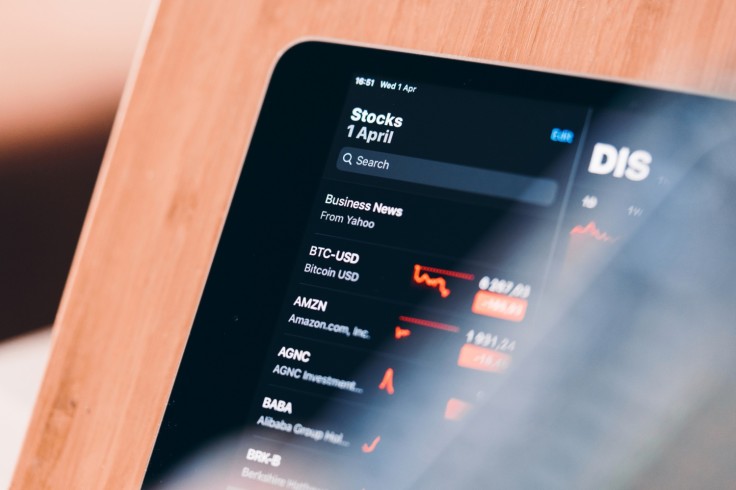
Trend Analysis with TradingView
TradingView is an advanced charting and social platform where traders can use various technical tools to express their analytical skills. It is available for simple access in mobile, desktop, and web-based applications. More importantly, the platform's user-friendly interface is excellent for trend analysis.
Stock trend analysis involves identifying the market direction for a stock instrument by analysing historical data. Price leaves a footprint that technical analysts follow to identify critical points, levels, and patterns, and these help them predict price behaviour. Price action traders will find helpful tools on TradingView for their analysis.
Trend analysis involves finding the repeating higher highs and higher lows (uptrend) and lower highs and lower lows (downtrend) for a market. Trends are found in every timeframe, so they may differ based on market sentiments. For instance, the monthly trend may be a downtrend, but the 30-minute and 5-minute charts may show clear uptrends.
Traders analyse stock trends using the top-down method, analysing trends from higher to lower time frames. This helps traders determine the overall market trend, find significant price levels with potential for reversals, and precisely enter or exit trades.
How to Analyse Trends on TradingView
The trendline is the best tool for identifying and determining trends. A trend line connects at least two price points, usually the highest points (highs or lows), and follows the price direction. Technical indicators showing direction, volume, and strength are also widely used to determine trends.

Trend Analysis with Trendlines
Trendlines are present as objects on Tradingview and can be added to any chart. Once added, traders can extend the trendline across price points, including sloped support and resistance areas. Some indicators, like the Bollinger Bands, have a dynamic trendline that tracks changes in price direction.
Dynamic support and resistance involve trend lines that move along the price, marking the essential potential levels where the price can reverse. When the price remains above the trendline with a positive slope, the market is in an uptrend and will remain bullish until a significant retracement or reversal occurs. This is also true for downtrends; the market will remain bearish if the price stays below the negative slope. It is important to remember that dynamic support and resistance points may serve as trend continuation points.
Channels are parallel trendlines (also called dynamic support and resistance lines) that measure the strength of a trend and potential points for breakouts. Channels are best for trending markets and may need to be clarified for ranging markets.
Trend Analysis with Fibonacci Retracements and Trendlines
Fibonacci Retracement is another excellent tool for measuring where potential price reversal may occur. Fibonacci is powerful when combined with trendlines and is well-used for trend analysis in the stock market. The tool works best in a trending market, allowing traders to buy or sell at support and resistance levels.
The Fibonacci tool is based on essential levels called Fibonacci levels. The idea is to locate the lowest and highest price points (called swing points), then place the Fibonacci on one point, and then draw it to the other point opposite of the trend. The Fibonacci tool automatically displays the key levels: 23.6%, 38.2%, 50%, 61.8%, and 100%.
The 23.6% and 38.2% levels are considered minor with potential for weak retracements. The 50% level is a meaningful pivot where the trend may reverse or continue, while the 61.8% and 100% levels are significant retracements.
The precision of Fibonacci retracements hinges on getting the trend right, and this is where trendlines help mark out higher highs and higher lows, and lower highs and lower lows, depending on the trend.
Drawing Tools and Chart Patterns for Trend Analysis
Price action traders identify trends using trendlines and use candle formations (chart patterns) to predict price movements. Price action traders use critical chart patterns for trend analysis:
- Pennant.
- Bullish and bearish flags.
- Ascending and descending triangles (continuation patterns).
- Heads and shoulders.
- Double top and double bottom.
- Rounding top and rounding bottom (reversal patterns).

Market Trends in Fundamental Trading
Fundamental analysis of the stock market is usually for long-term positions. Fundamental traders can also analyse stock market trends on Tradingview by tracking specific information like the price-to-earnings ratio, price-to-cashflow, market capitalisation, and float shares outstanding for various companies. Although less popular than technical analysis, it helps traders form a sentiment on stock prices. Company financials, TradingView's news feed and social hub, and the built-in economic calendar are also helpful for trend analysis.
Identifying Trends with Chart Patterns and Indicators
Trend analysis is a core concept in stock trading. It helps investors to identify the market direction and find crucial price levels for buying or selling stocks. The trendline is the most critical tool for any trader to determine market trends. When combined with chart patterns and indicators such as the Fibonacci, traders can precisely analyse the stock market. Fundamental traders will also find Tradingview helpful in tracking stock market news and essential data that shape market sentiments and, thus, the market direction.









